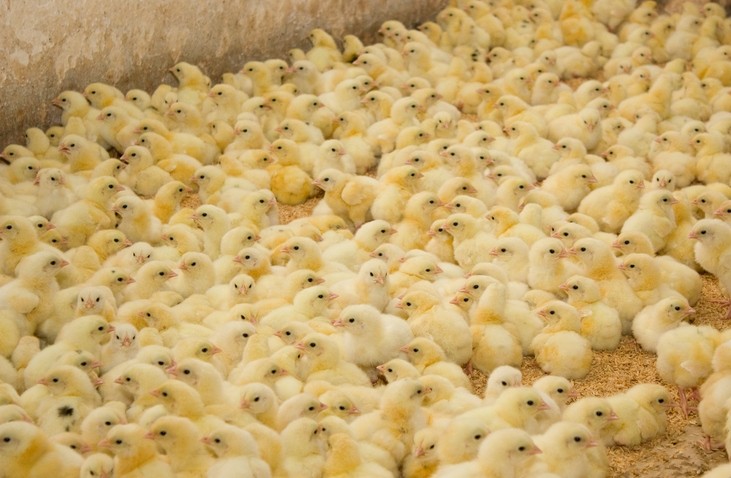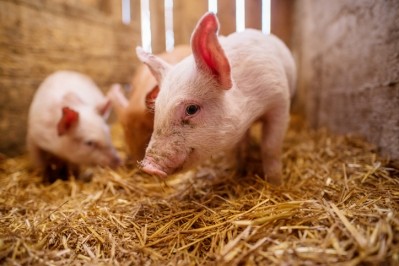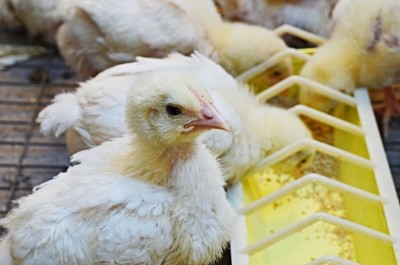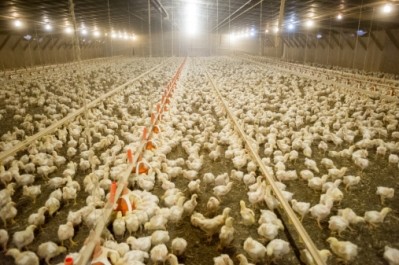Reports from IPPE
Phibro expands product line into direct-fed microbial sector

The New Jersey-based animal health company launched its new direct-fed microbial, Provia Prime, at the International Processing and Packaging Expo (IPPE) in Atlanta last week.
The goal of creating a direct-fed microbial was to improve the support provided to producers intent upon reducing their use of antimicrobials, said Bruce Johnson, corporate VP of business development. Phibro continues to produce, sell and support the use of non-human medically important antibiotics, but there also was a need to provide an option for all types of producers – including those not using antibiotics.
“As animal growth promotants, antimicrobials, etc. decrease in animal feed, nutrition producers are looking for alternative ways to do that,” he told FeedNavigator. “Direct-fed microbials, probiotics … seem to be a very cost-effective, and efficient and successful [way] to gain some of that performance back.”
“Over time, I think they’re going to become even larger, they’re going to become more of a foundation,” he added. “Everybody is going to be using them and everybody is going to be putting them in the ration at some level for some purpose.”
In addition to the move away from the use of medically important antimicrobials for growth promotion, 50% or more of the US poultry industry is foregoing dependence on antibiotics altogether, he said. “We want to offer solutions to that side of the industry as well, [and] direct fed microbials tend to be the one thing that shows we can get some of that performance loss back,” he added.
The poultry product saw its initial release into the US market, said Paulo Rezende-Napier, product director in nutritional specialties with Phibro. However, the rollout is set to continue into countries in Latin America and Asia followed by Europe.
The timing for release varies regarding differences in the registration process, he said. “Some countries demand registrations for these products [and] some do not – but it’s a complex matrix of understanding of where we can get and not,” he added.
Developing a direct-fed microbial
Phibro spent about three years developing its poultry-focused direct-fed microbial blend, said Johnson. It includes four microbial strains selected to work toward different ends.
“The goal of feeding a direct-fed microbial is to enhance or improve the microbiome, which is the gut microbial community,” he said. “Once you improve the gut microbial community, then you start seeing improvements in feed utilization, improvements in growth gain, decrease in pathogen content, decrease in lesion scores, less clostridia, less salmonella [and] less e. coli – the direct fed microbial is the vehicle we have to get the bird to enhance its own microbial microbiome.”
The company does not have a large library of microbes, he said. The development process started with evaluating the strains available in global libraries.
Microbial strains were selected for the ability to control pathogens, improve feed use and work together, Johnson said. Design efforts then focused on finding the best ratio for a microbial blend and how much needed to be used.
“The organisms are all going to have a defined end product – you can feed one organism at an appropriate level and show an effect on one end product, like feed utilization, but what about decreasing pathogens? Or reducing mortality? Or reducing gut legions?” he said. “You’re not going to change the microbiome on that side of things – you need a different organism.”
“We put together a combination of four organisms – organisms that produce enzymes for feed utilization, we took an organism that produces lactic acid, which lowers the gut pH… and we took an organism that had an antimicrobial effect against clostridia,” he said. Adding that lowering the gut pH supports the development of beneficial gut bacteria.
“We tried to put together a combination of organisms that would give us performance, would give us overall microbiome community health and ultimately specific pathogen reduction, and that was how we got to our four organisms,” he said.
Currently, the blend is intended for use at a set rate throughout the lifespan of a chicken, however, there are some questions remaining for future development, said Johnson. The next step is to alter the feeding rate of the microbial blend.
“Over time, another three to five years, we could see products that actually change the organisms themselves,” he said. “You may want a different ratio of organisms in the starter versus the finisher – the industry is not that sophisticated yet with that information.”
Trial results
A 42-day feeding trial evaluating the use of the direct-fed microbial blend, included a positive control with birds raised in clean litter and a negative control of birds on non-supplemented diets in disease-contaminated litter, said Johnson. Birds receiving the direct-fed microbial also faced the disease challenge during the production trial.
Compared to disease-challenged, control-group birds, those receiving the feed additive saw feed conversion levels similar to the non-challenged birds, Phibro said. The group on the supplemented diet had a feed conversion about 9.5 points better than the challenged control group.
Challenged birds saw an average body weight at the end of the feeding trial of 5.25lbs, while challenge birds receiving supplemented feed weighed about 6.15lbs, the company said. Non-challenged, control group birds weighed about 6.17lbs on average.
Additionally, the supplemented birds saw improved mortality during the disease trials with about 1.3% mortality compared to the 12% mortality in the challenged control group, the company said.
At the end of the trial, birds also were examined for gut lesions and scored from 0 to 4, with 4 being for the most pronounced lesions, Phibro reported. On average, challenged birds scored a 2, while those on the feed additive were at 0.35.















